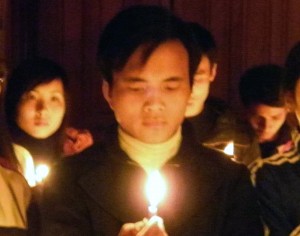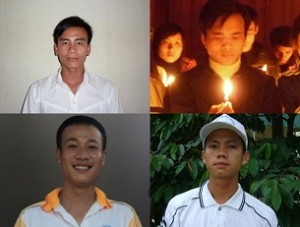Last line of Defence - Tuyến Phòng Thủ Cuối Cùng
Featured
-
Open letter to Diplomatic Missions of the democratic countries in Vietnam
-
Thư ngỏ của gia đình TNLT Trịnh Bá Phương gửi phái bộ ngoại giao các nước dân chủ
-
Imprisoned activist Trinh Ba Phuong charged for writing ‘down with communism’
-
TNLT Trịnh Bá Phương bị khởi tố khi đang thi hành án tù mười năm
-
Một thương binh bị bắt vì giúp người dân khiếu kiện
-
Thành viên thứ hai của Tập hợp Dân chủ Đa nguyên bị bắt tạm giam
-
Tù nhân chính trị ở Trại giam Xuân Lộc kêu cứu vì bị bỏ đói
Recent Comments
-
Height Insoles: Hi, I do believe this is an excellent site. I stumbledupon …
-
http://fishinglovers.net: Appreciate you sharing, great post.Thanks Again. Keep writi…
-
Achilles Pain causes: Every weekend i used to pay a quick visit this site, as i w…
Powered by WordPress • Themify WordPress Themes






August 16, 2016
Hanoi Mulls over Planting 45,000 Trees along Thang Long Avenue
by Nhan Quyen • [Human Rights]
Falling tree show how it was planted by Hanoi workers
by Vu Quoc Ngu, Aug 17, 2016
Authorities in Vietnam’s capital city of Hanoi plan to grow about 45,000 trees along Thang Long Avenue, the longest of its kind in the country, said a senior leader of the city.
Speaking at a meeting with voters in Hoan Kiem district on Aug 15, Chairman Nguyen Duc Chung of the municipal People’s Committee said the trees will help green up the city from Ba Vi outlying district to the National Convention Center.
In the short term, around 20,000 trees will be planted, said Chung, who was former head of the city’s Department of Police.
The capital city hopes to make a progress in managing trees in 12 inner districts, including a plan to grow one million new trees by 2020. To achieve the target, the city has consulted scientists and relevant offices about which types of trees should be planted.
Thang Long Avenue has the length of 30 km and the width of 140m for six lanes of vehicles.
It connects Hanoi’s inner part with satellite urban areas, such as Xuan Mai, Mieu Mon, and Son Tay, and tourist sites, including Ba Vi, Suoi Hai, and the Vietnam Ethnic Cultural Village. With its one end at Ho Chi Minh National Highway, it also links Hanoi with other localities.
Last year, Hanoi planned to chop down 6,700 aged valuable trees in the city’s main streets and replace with new trees which are not suitable for urban conditions. Chung, then police chief of the city, was among active figures of the project.
The city was forced to suspend the project after meeting strong protest from environmentalists. However, hundreds of trees planted by French nearly 100 years ago were chopped down.
In late July, many newly-planted trees in Hanoi fell down due to strong wind, showing the trees were not planted properly as workers did not replace covers which were used during transport from seedling garden from their roots.
Hanoi has also a plan to send workers to China to learn tree planting, state media reported earlier this year.